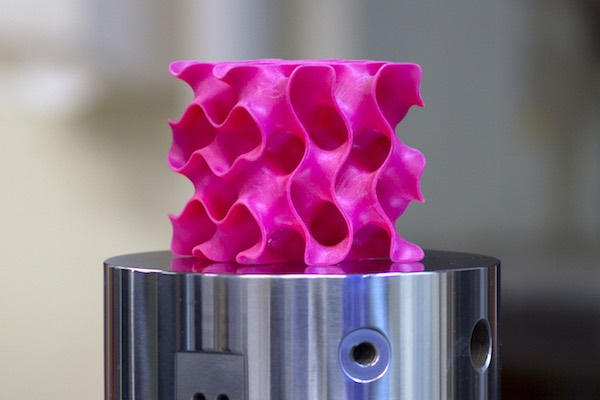
[Image above] 3-D-printed gyroid models such as this one were used to test the strength and mechanical properties of a new lightweight material. Credit: Melanie Gonick; MIT
Although 2-D materials like graphene have unsurpassed strength and a whole host of properties that make then potentially revolutionary, the difficulties of integrating 2-D materials into 3-D structures has hindered any potential revolution thus far.
But engineers at the Massachusetts Institute of Technology (Cambridge, Mass.) have figured out the key to building strong yet light 3-D structures from graphene.
Using pressure and heat, the team compressed 2-D graphene flakes into 3-D structures with a large surface area in a small volume. Then, using atomistic computational modeling, the scientists built robust simulations of the material’s gyroid structure, accounting for individual atoms within those structures.
These simulations showed that, with an optimized structure, porous graphene geometries could have 10 times the strength yet just 5% the density of steel.
To confirm their simulations, the engineers 3-D-printed much larger models of these geometries out of plastic, varying the wall thickness, so that they could experimentally test how well the structures held up in actual tests.
Hear more from the engineers themselves and see how the structures held up in the short MIT video below.
Credit: Massachusetts Institute of Technology (MIT); YouTube
And the best part is that the concept isn’t limited to graphene.
“You could either use the real graphene material or use the geometry we discovered with other materials, like polymers or metals,” Markus Buehler—senior author on the new research, head of MIT’s Department of Civil and Environmental Engineering, and McAfee Professor of Engineering—says in an MIT press release. “You can replace the material itself with anything. The geometry is the dominant factor. It’s something that has the potential to transfer to many things.”
The open-access paper, published in Science Advances, is “The mechanics and design of a lightweight three-dimensional graphene assembly” (DOI: 10.1126/sciadv.1601536).
